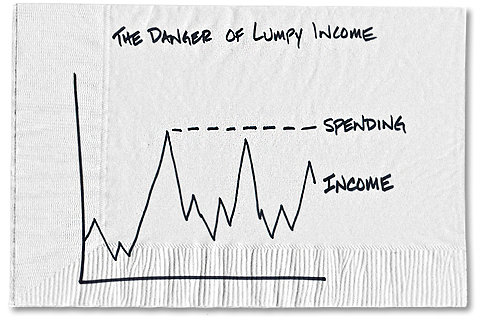They had three very different dreams, but these women had one thing in common: they all lost jobs and decided to use sizable retirement accounts to start their own businesses in very different fields. They did so by converting traditional 401(k) accounts into new retirement plans — known as “rollovers as business start-ups,” or ROBS — that they could invest in their companies.
“It’s fueled by the fact that stock market has returned to all-time highs, real estate is up, consumer confidence is up — but we’re also suffering from a credit crisis, and unemployment remains high,” said David Nilssen, chief executive of Guidant Financial, which specializes in helping people use 401(k) assets to invest in businesses or other nontraditional assets, like property. “People look at this because they can capitalize a business without taking on any debt.”
While this may sound like an easy solution to finance a company, it is incredibly complicated, and the risks of running afoul of the Internal Revenue Service or the Department of Labor, which has jurisdiction over 401(k) plans, are significant. The worst possible outcome is a triple-whammy loss of a person’s retirement savings, the business and a source of income if the idea fails.
Adding to the complications, ROBS exist in a parallel financial universe, where those who promote the plans see them as solutions for retirement-rich but cash-poor entrepreneurs, while many other financial advisers see the plans as treading the line of legality.
“The I.R.S. has said that they don’t view them as tax-avoidance schemes per se,” said Carol J. Ventura, retirement specialist at H.D. Vest, a broker-dealer with $33 billion under management. “They’re not illegal, but the I.R.S. is saying that they have to be perfectly put in place. They’re very complicated.”
Failure to do everything right could lead to anything from penalties to having the entire retirement plan disallowed, which would mean a big tax bill.
Still, Mr. Nilssen said the idea had been gaining in popularity. He said his company had its best year in 2012 with 1,300 new ROBS and expects to do 1,700 this year. I wanted to know what the attraction was to something that seemed so complicated and magnified the sizable risk of starting any business.
Here’s how ROBS work: People take their 401(k) account (or other qualified retirement plan) and roll it over into a new plan that buys shares in an operating company that will own their business. Unlike most small businesses, which are set up as limited liability corporations or S-corporations, a business financed through ROBS has to be a C-corporation, which can issue shares and does not prohibit ownership by trusts.
In many cases, people turn to ROBS because they don’t have other sources of financing and have not been able to secure a small-business loan.The companies of the people I spoke to were owned by anywhere from 90 percent of one person’s 401(k) to 100 percent of two entire plans.
That might sound simple, but what effectively happens is that the plan, not the person, owns the business. That means the person cannot act in his best interest but must act in the best interest of the plan. For example, if he wants to give himself a raise, he needs to find out what similar business owners make.
“I have counseled people on how to do them correctly and then I typically say, ‘I find it to be a bad idea and you’re probably going to get yourself in trouble,’ ” said Bill Smith, a tax lawyer and managing director in the CBIZ National Tax Office. “The I.R.S. is not consistent on what it considers correct. It’s very easy to mess these things up.”
Mr. Nilssen said Guidant helped people set up the initial plan and managed the reporting requirements. He said that of his firm’s 8,500 clients, about 50 had been audited, but none had had action taken against them.
Ms. Jones said that in the course of putting $260,000 of the $340,000 she had in her retirement account into buying a Decorating Den franchise in Nashville, she had several lean years during the recession, but that she is now doing well. She says she is also happier than when she was working in health care technology.
But she said the paperwork to comply with the I.R.S. rules could be complicated — and managing paperwork was part of her previous career. One requirement of these plans is that she and any employees pay into the 401(k) set up to buy the company. “That check has to be out the door seven days after payroll,” she said. “If I’m late at writing a check to deposit my 401(k) money, there are penalties, and I’ve paid penalties.”

Article source: http://www.nytimes.com/2013/09/14/your-money/financing-start-up-dreams-with-retirement-savings.html?partner=rss&emc=rss

